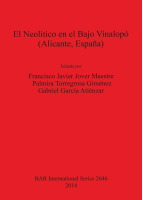Description
BOOK DESCRIPTIONThis volume focuses on the beginning and development of the Neolithic in the territories near the final section of the Vinalopó river, and deals with the following matters through several chapters. The book presents in detail new information generated inthe final section of the Vinalopó river. It studies the Neolithic materials from La Alcudia (Elche), their location, and makes a comparative analysis about the catchment area. This study shows that, both in this case and in Limoneros II and Cova de les Aranyes, the location was chosen according to the way of life of these first farmers. Regarding Limoneros II, it presents an initial preview of the urgent excavation carried out by the company Alebus Patrimonio Histórico S.L., which has allowed the documentation of a new settlement from the Early Neolithic. The book also presents the results of the excavation carried out in Cova de les Aranyes by M.S. Hernández Pérez and A. Guilabert Mas in the first years of the 21st century, and the study of the documented materials in this excavation and some previous ones. Next, it presentd the information collected from El Alterón, a site that was discovered as the result of an urgent excavation, made of different negative structures that suggest a settlement in the 5th millennium cal BC at the foot of the sierra of Crevillente. On the other hand, the surveys carried out in the sierra of Santa Pola discovered several sites and excavated activity areas located near the coastline, linked to the use of marine resources. Finally, also as the result of an urgent excavation campaign, it was possible to document in Galanet a wide amount of negative structures. The palynological and carpological studies, the datings, and the analysis of the materiality of artefacts, suggest asite similar to a field of silos dating from the beginning of the 3rd millennium cal BC, located in the Barranco of San Antón, which runs parallel to the Vinalopó river.











